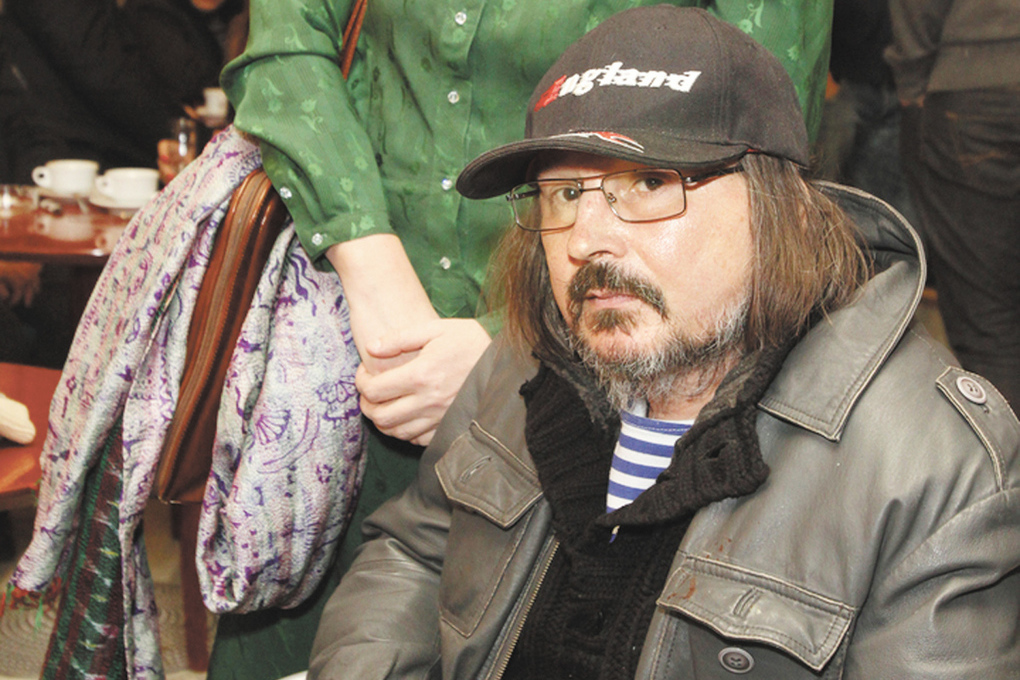A performative reading of Balabanov’s script “My Brother Died” was presented at the Theater of Nations
[ad_1]

February 25 marked the 65th anniversary of the birth of director Alexei Balabanov. He died in May 2013. He was 54 years old. The New Space of the Theater of Nations presented a performative reading of his script “My Brother Died,” which he completed three days before his death.
The performance was created as part of the Layer project by director Maxim Sokolov, who belongs to a completely different generation. He knows Balabanov only from films, but while working on his latest script, he met his widow Nadezhda Balabanova, friends and colleagues Lyubov Arkus and Sergei Selyanov.
The events in the scenario “My Brother Died” take place in the “afterlife.” Vanya is endowed with autobiographical features of Balabanov. He loves the writer Nikolai Leskov – Balabanov loved him too. Vanya’s torso has died, but continues to live in the head of his younger blind brother Petya. Vanya has a second pair of eyes. He sees them as his brother. The elder brother’s eyes will close after death, and the younger brother will begin to see clearly, to look at the world through his eyes. In the play, Petya stands at the gravestone on which the dead man has climbed, and they engage in a dialogue.
There are shards of broken glass underfoot. They sparkle in the spotlight. Some kind of kingdom of crooked mirrors, a twilight world. You don’t know exactly whether it’s this light or that light. All around are gloomy a la concrete walls. The space is narrow, stuffy, some kind of black triangle. The main character is Pyotr Mikhalkov (the name here is certainly no coincidence; Balabanov worked with Mikhalkov on “Zhmurki”), a visually impaired man who killed his father and wife and came with a sincere confession. He is ready to give his life for his people.
Photographs from the Balabanovs’ archive, which no one has seen before, are projected onto the grave monument. They were provided by Nadezhda Vasilyeva. There Alexey is very young, with his mother, in his student years and as many found him – from under his jacket you can see the vest that he constantly wore in recent years, on his head – a fur hat with earflaps. In the finale, the cottage of the sanatorium in which he died appears on the right portal. A difficult sight.
The music was written by composer Nikolai Komyagin. It is alarming, gives what is happening a cosmic sound, but still closer to Tarkovsky than Balabanov. Although there is no point in arguing here. Everyone has their own understanding of Balabanov, and that’s good.
The director of the play, Maxim Sokolov, who is 25 years younger than Balabanov, says: “We are trying to go through Balabanov’s last text, or at least find the path of the last hero of Russian cinema. Find out, understand, perhaps predict its features, which can be discerned in today’s day only if you know the source.”
Before you find yourself in the auditorium, you walk through the hall and are plunged into painful reality. In the center there is a concrete block created by the artist Anastasia Yudina. Between the two arrays are letters that form the word “layer”. It is subtle and can be interpreted in different ways. The monitors show the sanatorium in Sestroretsk where Balabanov died. The camera moves along its corridors. An employee sorts through prehistoric paper cards and finds the name of a famous guest.
We are taking the excursion together with Alexei’s widow, Nadezhda Vasilyeva-Balabanova, who worked as a costume designer on many of her husband’s projects. She talks about the bar where Balabanov sat and talked with the guard more than once by the purple wall. On Thursday, Alexey Balabanov sent Nadezhda the finished script, and on Saturday he was gone. She recalls how they once went to see Emir Kusturica and saw a program with psychics in the hotel. A mother came to see her with her son, who had four eyes. “Lesha just froze at that moment. Mother of God! Four eyes! Two are normal. And two are like slits above the eyes,” says Nadezhda Vasilyeva. After this, Alexey wrote the script, the meaning of which was later explained to Nadezhda by their son Petya. He took the script for his thesis and made a storyboard. At Balabanov’s recent exhibition in St. Petersburg, Alexey’s latest script was presented.
“All his films are like predictions,” says Nadezhda Vasilyeva. “He wrote, it seems to me, this script for his children, especially for the youngest, so that he could choose his own path. Four eyes, according to Petya, mean that two people live inside you – good and bad. The main thing, as Lesha said, is not who to be, but to be a good person.”
Balabanov has several unmade films in varying degrees of completion. Among them is “Pan” based on the novel of the same name by Knut Hamsun and the short story “The Death of Glan”. It was written in the early 90s together with Sergei Selyanov. There are sketches based on “Camera Obscura” by Vladimir Nabokov, whose ideas were partially transferred into “My Brother Died”, “Roadside Picnic” based on the Strugatsky brothers (the fact that “Stalker” was not bothered Balabanov, he considered Tarkovsky’s film to be far from the original source ), a film adaptation of “The Hyperboloid of Engineer Garin” based on the prose of Alexei Tolstoy. Among the films remaining on paper is “Young Stalin,” inspired by the monograph of the same name by British historian Simon Montefiore. Balabanov invited Kusturica to be a co-author, but he was not inspired by the idea.
Newspaper headline:
Balabanov’s film on paper became a performance
[ad_2]
Source link






